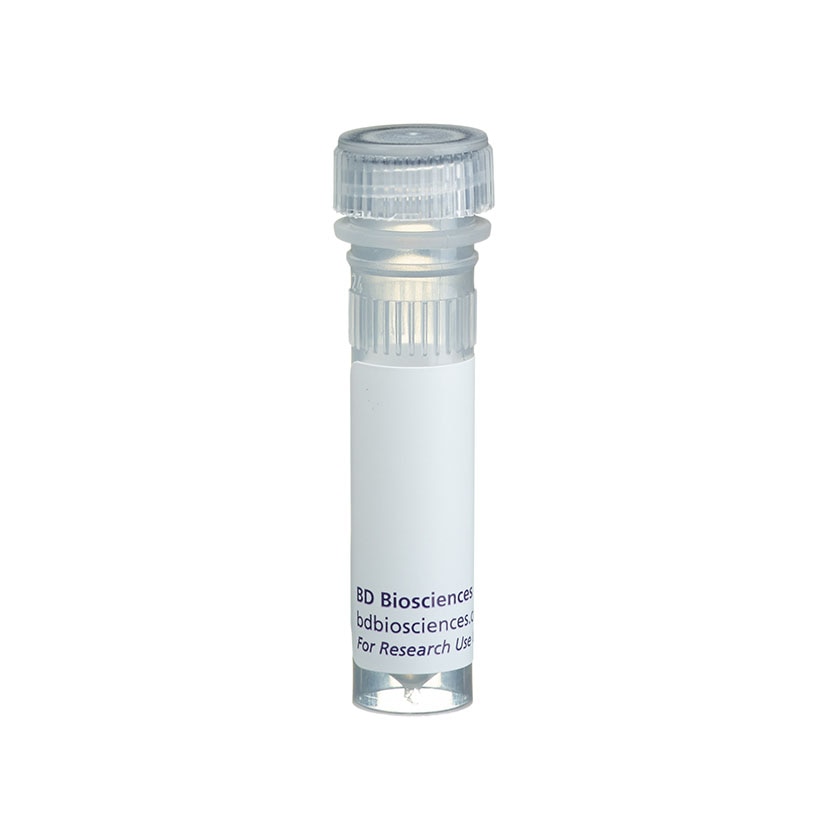-
Reagents
- Flow Cytometry Reagents
-
Western Blotting and Molecular Reagents
- Immunoassay Reagents
-
Single-Cell Multiomics Reagents
- BD® OMICS-Guard Sample Preservation Buffer
- BD® AbSeq Assay
- BD® Single-Cell Multiplexing Kit
- BD Rhapsody™ ATAC-Seq Assays
- BD Rhapsody™ Whole Transcriptome Analysis (WTA) Amplification Kit
- BD Rhapsody™ TCR/BCR Next Multiomic Assays
- BD Rhapsody™ Targeted mRNA Kits
- BD Rhapsody™ Accessory Kits
- BD® OMICS-One Protein Panels
- BD OMICS-One™ WTA Next Assay
-
Functional Assays
-
Microscopy and Imaging Reagents
-
Cell Preparation and Separation Reagents
Old Browser
This page has been recently translated and is available in French now.
Looks like you're visiting us from {countryName}.
Would you like to stay on the current location site or be switched to your location?
BD Pharmingen™ Biotin Rat Anti-Mouse IgE
Clone R35-118 (RUO)




Regulatory Status Legend
Any use of products other than the permitted use without the express written authorization of Becton, Dickinson and Company is strictly prohibited.
Preparation And Storage
Recommended Assay Procedures
ELISA: For detection of mouse IgE by sandwich ELISA, this antibody may be used as the detection antibody at ~ 2 µg/ml coupled with purified rat anti-mouse IgE antibody (clone R35-72) (Cat. No. 553413) as the capture antibody. Purified mouse IgE (Cat.No. 557079, 553481, or 557080) may be used as the ELISA standard. Alternatively, the BD OptEIA™ Mouse IgE ELISA Set (Cat. No. 555248) is offered as a convenient sandwich ELISA product that is easy-to-use and may be used for the quantitation of soluble mouse IgE.
Mouse IgE ELISA protocol
I. Coat with capture antibody:
1. Dilute the purified rat anti-mouse IgE capture antibody (clone R35-72) (Cat. No. 553413) to ~ 2 µg/ml in coating buffer. Add 100 µl per well to an enhanced protein-binding ELISA-grade plate (e.g., BD Falcon™ Cat. No. 353279). Investigators are encouraged to to determine the optimal antibody concentration for their use. Titrations between 1-8 µg/ml are suggested.
2. Shake plate to ensure all wells are covered by the capture antibody solution.
3. Cover the plate and incubate for 1 hour at 37°C or overnight at 4°C.
4. Wash the plate 3X with PBS/Tween. For each wash, wells are filled with 200 µl PBS/Tween and allowed to stand at least 1 minute prior to aspirating or dumping. As a final step, tap plate on paper towels to remove excess buffer.
II. Blocking:
1. Block the plate with 200 µl blocking buffer per well.
2. Cover the plate and incubate at room temperature for 30 minutes.
3. Wash the plate 3X with PBS/Tween, as in described section I, step 4.
III. Apply standards and samples:
1. Leave column 1 of the plate as blank wells (i.e., no antigen added at 100 µl per well consisting of blocking buffer only). Use columns 2 and 3 for duplicates of the standard at 100 µl per well. Dilute the purified mouse IgE standard (Cat. No. 557079, 553481 or 557080) in blocking buffer. Dilutions should range in a series of 8 two-fold dilutions, in blocking buffer, starting at 0.5 µg/ml. Use the remaining columns to add samples of interest at various dilutions in blocking buffer at 100 µl per well.
2. Cover the plate and incubate for at least 1 hour at room temperature or overnight at 4°C.
3. Wash the plate 3X with PBS/Tween, as in section I, step 4.
IV. Incubation with detection antibody:
1. Dilute the biotinylated rat anti-mouse IgE antibody (clone R35-118) (Cat. No. 553419) to ~ 2 µg/ml in blocking buffer. Add 100 µl per well. Investigators are encouraged to to determine the optimal antibody concentration for their use. Titrations between 1-8 µg/ml are suggested.
2. Cover the plate and incubate at room temperature for 1 hour.
3. Wash the plate 6X with PBS/Tween, as in section I, step 4.
V. Add avidin- or streptavidin-horseradish peroxidase (Av-HRP or SAv-HRP):
1. Dilute Av-HRP (Cat. No. 554058) or SAv-HRP (Cat. No. 554066) as recommended for the product (e.g 1:1000) in blocking buffer. Add 100 µl per well.
2. Cover the plate and incubate at room temperature for 30 minutes.
3. Wash the plate 6X with PBS/Tween, as in section I, step 4.
VI. Add substrate and develop:
1. Thaw substrate (ABTS) buffer within 20 minutes of use. Add 11 µl of 30% H2O2 (Sigma-Aldrich, Cat. No. H1009) to 11 ml substrate buffer and vortex. Immediately add 100 µl per well and allow to develop at room temperature for 20-30 minutes. Color reaction can be stopped by adding 50 µl per well of SDS/DMF Solution (optional).
2. Read the plate at 405 nm.
Product Notices
- Since applications vary, each investigator should titrate the reagent to obtain optimal results.
- Please refer to www.bdbiosciences.com/us/s/resources for technical protocols.
- Caution: Sodium azide yields highly toxic hydrazoic acid under acidic conditions. Dilute azide compounds in running water before discarding to avoid accumulation of potentially explosive deposits in plumbing.
Companion Products


The R35-118 clone has been reported to react specifically with mouse IgE of Igh-C[a] and Igh-C[b] haplotypes. It has been reported not to react with other Ig isotypes.
This antibody is routinely tested by ELISA analysis. Other applications were tested at BD Biosciences Pharmingen during antibody development only or reported in the literature.
No Citations Are Available for this Product
Please refer to Support Documents for Quality Certificates
Global - Refer to manufacturer's instructions for use and related User Manuals and Technical data sheets before using this products as described
Comparisons, where applicable, are made against older BD Technology, manual methods or are general performance claims. Comparisons are not made against non-BD technologies, unless otherwise noted.
For Research Use Only. Not for use in diagnostic or therapeutic procedures.